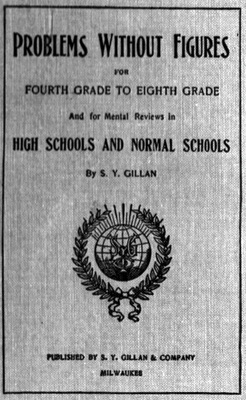For eight years, I have suggested, to those who doubt the ability of U.S. high school seniors to write academic history research papers, that schools should start on our Page Per Year Plan, which would work as follows:
Each first grader would be required to write a one-page paper on a subject other than herself or himself, with at least one source.
A page would be added each year to the required academic writing, such that, for example, fifth graders would have to write a five-page paper (five sources), ninth graders would have to write a nine-page research paper, with nine sources, and so on, until each and every senior could be asked to prepare a 12-page academic research paper (twelve sources), with endnotes and bibliography, on some historical topic, which the student could choose each year.
This would gradually prepare students for future academic writing tasks, and each senior could graduate from high school knowing more about some important topic than anyone else in the class, and he/she might also have read at least one nonfiction (history) book before college. This could reduce the need for remedial instruction in writing (and perhaps in remedial reading as well) at the college level.
At each grade level, teachers would need more time to help students plan their papers and to evaluate and comment on them when the papers came in, but with our Page Per Year Plan, all students would be likely to graduate from U.S. high schools with better academic expository writing skills and better reading skills.
In our public schools, the power over reading and writing belongs to the English Department, and many social studies and history teachers, perhaps especially those who are preparing students for AP exams, do not believe their students have the time to read a history book or write a history research paper.
While this is the rule, there are exceptions, and I have been glad to publish [835] history papers written by AP history students [from 36 countries] in the last 20 [21] years of The Concord Review. But all too often, those exemplary papers were written by students putting in the extra time and effort to do an independent study, of the sort that Diane Ravitch believes is now in steady decline in our schools.
Of course it is rewarding for me to receive letters, like one from Shounan Ho when she was at Notre Dame Academy in Los Angeles, which included a comment that: “I wrote this paper independently, during my own time out of school. My motives for doing so were both academic and personal. Although history has always been my favorite subject, I had never written a paper with this extensive research before. After reading the high quality of essays in The Concord Review, I was very inspired to try to write one myself. I thought it was a significant opportunity to challenge myself and expand my academic horizons. Thus during the summer before my Senior year, I began doing the research for my own paper.” She is now a John Jay Scholar at Columbia University, and it seems likely she found that she had prepared herself well for college work.
But what about those students who depend on educators to set academic standards which will prepare them for the reading and writing tasks ahead? For those students, I recommend that teachers consider the Page Per Year Plan to help their students get ready. Again, this plan would also make it somewhat more likely that our high school graduates would have been asked to read perhaps one complete history book before they leave for college or for work.
“Teach by Example”
Will Fitzhugh (founder)
Consortium for Varsity Academics® (2007)
The Concord Review (1987)
National Writing Board (1998)
730 Boston Post Road, Suite 24
Sudbury, MA 01776 USA
(800) 331-5007; (978) 443-0022
fitzhugh@tcr.org; www.tcr.org
Varsity Academics®
 A Math book for “High Schools and Normal Schools by S.Y. Gillan [
A Math book for “High Schools and Normal Schools by S.Y. Gillan [